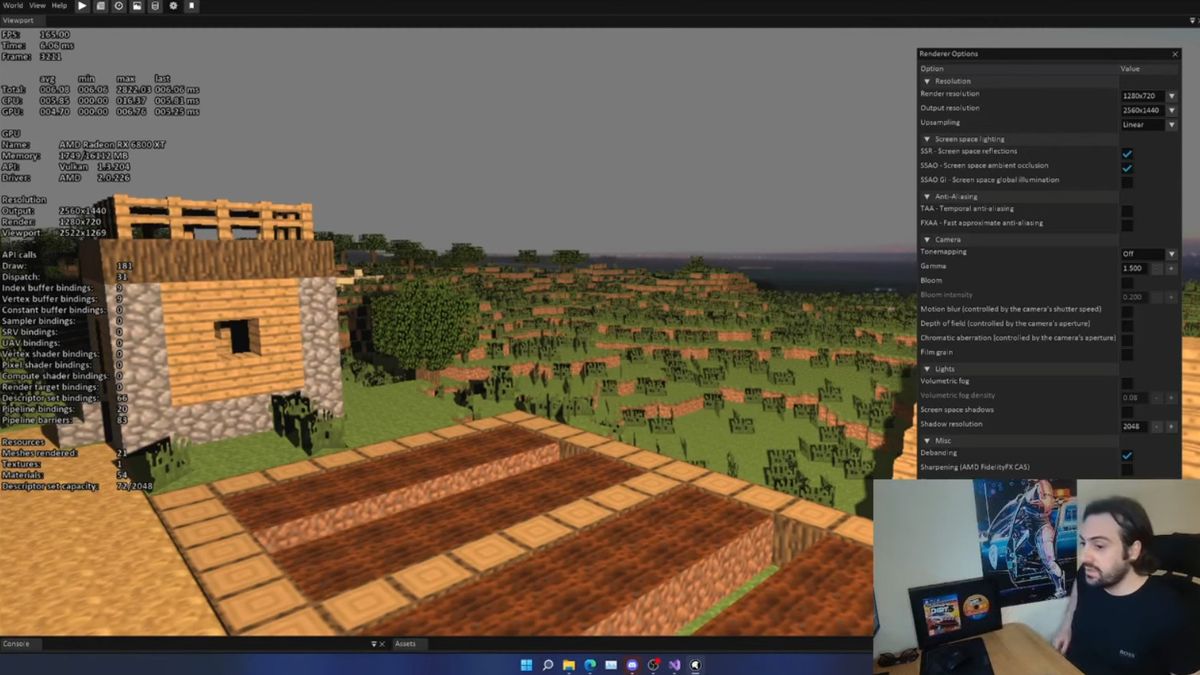Products You May Like
How quickly can AMD’s FSR 2.0 (FidelityFX Super Resolution) be bolted on to a game? Pretty swiftly indeed, as demonstrated in an eye-opening livestream session conducted by a software development engineer at Team Red.
Panos Karabelas (who was previously a rendering programmer at Codemasters, of DiRT and F1 fame) has now posted that stream up on YouTube (see below), and it shows the seriously impressive feat of incorporating FSR 2.0 into his own Spartan Engine.
The entire process, from downloading the repository on Github, through to coding into the game engine, is over in less than an hour. Yes – this is tangible proof that introducing support for the frame rate boosting feature really can happen this quickly.
Granted, it’s about the most basic implementation of FSR 2.0 possible, as Karabelas explains: “I didn’t do reactive mask, I didn’t do transparency and composition, I didn’t enable sharpening. This is as barebones as it gets.”
But nonetheless, the results are impressive – upscaling from 720p to 1440p – and the whole process is so smooth and fast, just hitting a few snags here and there, that it’s exciting to think how easy it could be for game devs out there to make the effort and include support for FSR 2.0.
Analysis: Super-speedy adoption for FSR 2.0?
So, can we expect more FSR 2.0-toting games to turn up in short order? Well, that’s a bit of a leap, but this little demo of the implementation of the frame rate boosting tech certainly sparks serious hope that adoption could happen much more swiftly than with Nvidia DLSS, when the ball gets rolling.
Karabelas praises AMD’s “amazingly good documentation” for devs looking to use FSR 2.0, with it apparently being very thorough, but there is a caveat. When it comes to implementing the upscaling tech, the engineer observes: “If you have a modern engine, it should be easy. If your engine is a little bit older tech, there is more work to do.”
Of course, we already know that games which have DLSS 2.0 support should have a very easy path to FSR 2.0 adoption, and for that matter, Unreal Engine will offer a quick route via a plug-in. And with modders already showing how it’s relatively simple to jury-rig a mod that leverages DLSS support to get a rough workaround to bring in FSR 2.0, everything is pointing to a fast pace of adoption for AMD’s rival to DLSS.
It’s worth noting that Nvidia has just announced a milestone whereby over 200 games now support DLSS – over the course of coming on for four years. While FSR 2.0 is only in a few titles right now, the original FSR 1.0 was in some 50 games at the end of last year, and just over 70 PC games now (in just over a year since its inception). We’re betting that the gap is going to be closed fast here, from what we’re seeing thus far about FSR 2.0 implementation.
Via PC Gamer (opens in new tab)
